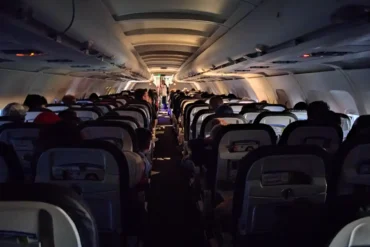Ensemble In the realm of aircraft cabins, the purser assumes a pivotal position, orchestrating the team and elevating the overall passenger experience.
While the term “purser” is frequently mentioned during flights, the specifics of this role might remain a mystery. Essentially, the purser is a seasoned member of the cabin crew, entrusted with additional managerial duties. This piece delves into the intricacies of the role, shedding light on its intriguing origins.
Understanding the purser’s role
Integral to every commercial flight, the purser stands as a linchpin in the cabin crew ensemble. Although airlines may use different titles, the purser primarily oversees the cabin crew, shouldering responsibilities for cabin safety, enhancing the passenger journey, and managing a significant portion of flight paperwork. Pursers are selected from within the ranks of the cabin crew; these individuals ascend the hierarchy while retaining their status as fully trained and qualified flight attendants.
To earn the title of purser, airlines implement diverse policies. Typically, candidates must accumulate five to ten years of experience as a crew member before qualifying for purser status. Interestingly, the most senior crew member onboard may not always hold the purser position; this authority often rests with Customer Service Directors or Inflight Service Managers, also known as chief pursers.
The number of pursers can vary based on factors like aircraft capacity, flight duration, and cabin crew size. In scenarios with multiple pursers, a chief purser may assume lead responsibility, while others oversee distinct classes or cabins. Now, let’s unravel the specifics of a purser’s role.
Understanding the purser’s responsibilities
Pursers shoulder additional responsibilities beyond typical cabin crew member duties. The specific tasks assigned to pursers vary across airlines, regions, and flight types. KLM provides insights into roles undertaken by its pursers, shedding light on the multifaceted nature of the position.
A purser’s responsibilities commence well before takeoff. Their pre-flight duties involve reviewing flight and passenger details, considering any special requirements, and coordinating with airport gates and boarding teams as necessary. Additionally, they play a pivotal role in assigning cabin crew roles for upcoming flights.
Once onboard, the purser makes all announcements through the PA system, providing pilots updates about relevant cabin information. In passenger interactions, they oversee distribution of landing cards and keep travelers informed of flight time changes, anticipated turbulence, and upcoming meal services.
Beyond these duties, the purser ensures appropriate handling of unruly passengers and works to calmly resolve heated situations. In severe instances, the purser has authority to recommend removing a passenger for air rage.
Concluding each journey, the purser assumes responsibility for various administrative tasks during and after the flight. This includes documenting in-flight sales, reporting cabin issues or defects, and completing crew documentation to ensure smooth operational transitions.
Where did the term originate?
Unlike “cabin crew”, the term “purser” has a longer history – its roots tracing back to maritime heritage. Traditionally, a ship’s purser managed finances onboard and oversaw other crew like stewards and cooks. Even on modern ships, the purser’s role endures, often managed by a dedicated team responsible for monetary affairs.
In aviation, the term ‘purser’ persists referring to the most senior crew member onboard. However, it has adapted into alternate titles like Inflight Service Manager, depending on responsibilities. On your next flight, take a moment to greet your purser, acknowledging their crucial role.
The next time a purser introduces themselves, you’ll better understand their role and duties. If you’re an airline purser, we welcome your insights.



